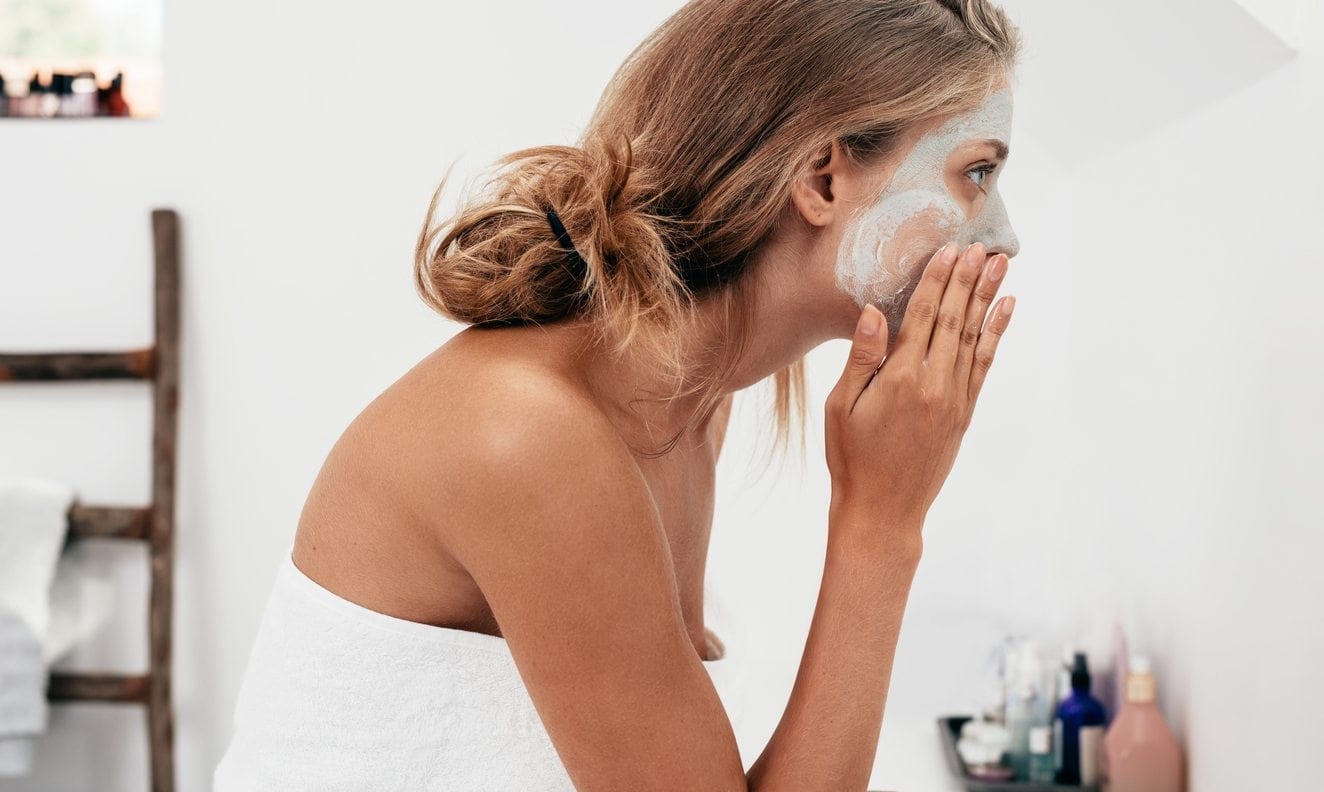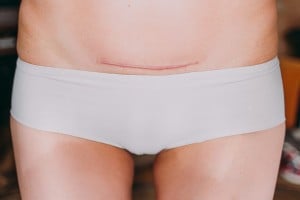Being pregnant causes your skin to undergo many unwanted changes. Unfortunately, these issues don’t just go away on their own once you’ve given birth. I’ve put together a list of the most common questions women have about postpartum skincare concerns. Here’s what you can do to restore your skin’s pre-pregnancy texture and tone.
1. What can you do about spider veins?
Increased blood circulation after pregnancy can cause smaller blood vessels to become visible through your skin. This is most noticeable in the face, but it can also occur in the legs or other parts of the body. In some cases, these unsightly veins will go away after three to four months, but most mothers continue to suffer from this condition for longer periods of time.
To treat spider veins naturally, you need to improve your blood circulation and blood vessel strength. Red raspberry extract can help to prevent the appearance of broken capillaries, and brisk cardio exercise helps improve overall circulation. You can also minimize the appearance of spider veins by using postpartum skincare to keep your skin moisturized.
2. What are the most effective treatments for melasma?
The simplest and most effective way for postpartum women to treat these dark patches of skin is to be careful about sun protection and avoid sunburn at all costs. Wear sunscreen with an SPF of at least 30 every time you go outside, and reapply sunscreen every two hours.1 Over time, the dark patches will begin to fade.
If you want melasma to go away quicker, you can talk to your dermatologist about other treatment methods. Hydroquinone comes in creams and lotions that can be applied to lighten the skin.
Some of these creams also contain tretinoin or corticosteroids, which help to lighten skin further. You can find some hydroquinone creams over the counter, but tretinoins and corticosteroids must be prescribed. If these creams do not work for you, a dermatologist may recommend laser treatment, chemical peel, or a dermabrasion procedure for postpartum skincare.
3. How do you make skin tighten up again?
All women have some loose skin after birth, so this is just a natural part of postpartum life. Age, genetics, pre-pregnancy weight, and the number of children you’ve had can all affect your skin’s likeliness to tighten back up again after pregnancy. However, you can do a few things to deal with this postpartum skincare problem.
Try to lose weight at a slow, even pace to avoid putting further stress on your body. Get plenty of water and take vitamin C and hydrolyzed collagen supplements that help to produce healthy skin cells. You can also try strength training exercises to build muscle and fill out areas with loose skin. It takes time and effort, but you will eventually notice your skin regaining its tightness.
4. Does everyone get postpartum acne, and how can you treat it?
One of the most common postpartum skincare complaints among new mothers is acne. This happens because fluctuating hormone levels increase oil production in your skin, causing hard, painful acne on the face and neck. It will go away once your hormones start to level out, but until then, you have a few treatment options.
Beginning birth control pills can help to regulate hormones, though these usually are not advisable during the early stages of breastfeeding. You can treat current outbreaks with benzoyl peroxide, which will help to reduce inflammation, and vitamin C creams to prevent scarring.
5. How do you manage dry, flaky skin?
Many women find they lose their pregnancy glow, so they end up with dull, dry skin during their postpartum months. Some women have such dry skin that their faces look red, flaky, or irritated. It’s typically worse along the nose, cheeks, and mouth area.
Start by applying a moisturizer every morning and evening. Also, look for a face cream that is non-comedogenic, which means it will not clog your pores. Proper skin hydration also requires changes to your diet. Make sure you are drinking plenty of water and getting enough vitamins C, D, E, and K. And keep in mind that breastfeeding women need an extra quart of water daily!
6. What causes post-pregnancy dermatitis?
Also called eczema, it causes bumpy, scaly, itchy, and rashy skin. An overactive immune system often triggers this skin condition, so many women experience it after pregnancy. It can be further exacerbated by exposure to antibiotics, latex, hard detergents, soaps, or other things women are in contact with after giving birth.
Managing postpartum dermatitis mostly relies on identifying and avoiding your triggers.2 This means paying attention to your skin and noticing if certain foods, pollens, or chemicals make the condition worsen. Your doctor may suggest a corticosteroid or antihistamine to reduce itching. You can speed up healing by keeping your skin moisturized.
7. What can you do to reduce the appearance of stretch marks?
Like any other scar, stretch marks will gradually fade once your pregnancy is over, but they may take a while to disappear naturally. Expensive creams and lotions generally do not make a big difference, regardless of what they promise. Most women can get the same benefits by using a basic lotion or body oil.
Using a topical cream with tretinoin may also help to lighten the marks, but this is only advisable if you do not plan to become pregnant again. You can try a laser therapy procedure to fade the stretch marks further.
Above all, remember that you gave birth! To a human baby! Your body is amazing, inside and out.























